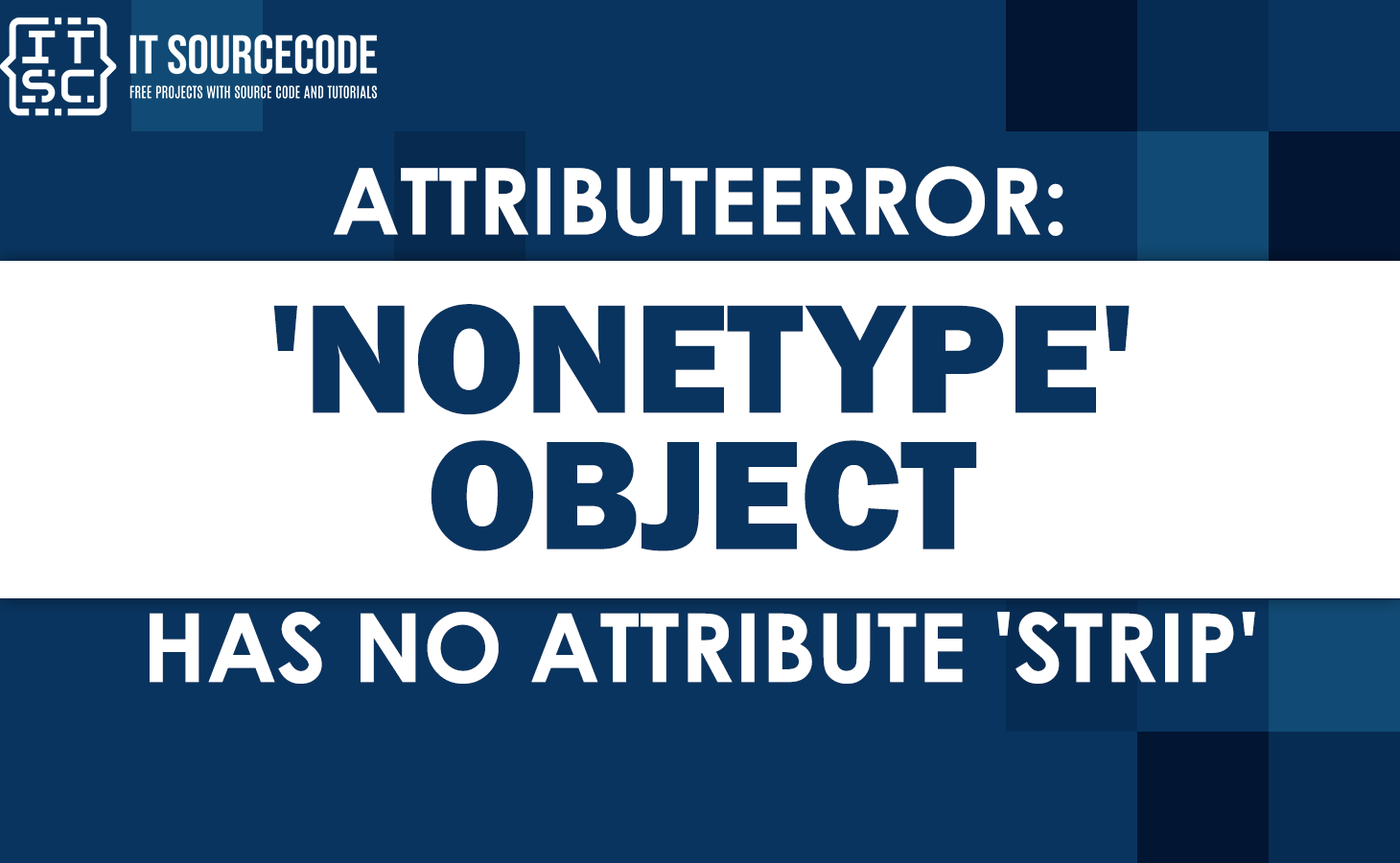The AttributeError: ‘NoneType’ object has no attribute ‘strip’ is an error message that is raised when you try to call the strip() method on a None object in Python.
In this article, we will fix Attributeerror: ‘nonetype’ object has no attribute ‘strip’, we will provide a brief discussion, its causes, and alternative solutions regarding the error.
So first let’s discuss What is Attributeerror: ‘nonetype’ object has no attribute ‘strip’?
What is Attributeerror: ‘nonetype’ object has no attribute ‘strip’?
AttributeError: ‘NoneType’ object has no attribute ‘strip’ is a Python error that occurs when you try to call the strip() method on a None object.
In Python, None is a special object that represents the absence of a value. It is often used as a default value for function arguments or to indicate the end of a list.
When you try to call a method like strip() on a None object, you’ll get an AttributeError because None doesn’t have that method. This error usually occurs when you forget to initialize a variable or when a function doesn’t return a value.
Problem Formulation
Here’s an example of how you might encounter the ‘nonetype’ object has no attribute ‘strip’ error.
We’re trying to call the strip() method on the variable, which has been set to None. However, None is a special type in Python that represents the absence of a value, and it doesn’t have a strip() method.
Here’s an example code:
my_string = None
cleaned_text = my_string.strip()Therefore, when we try to call strip() on the variable, Python raises an AttributeError.
AttributeError: 'NoneType' object has no attribute 'strip'What can you do? Let’s understand the reason this error occurs—after that, you’ll learn the best solutions to fix Attributeerror error.
Why ‘nonetype’ object has no attribute ‘strip’ Occurs?
The AttributeError: ‘NoneType’ object has no attribute ‘strip’ occurs when you are trying to use the strip() method on a variable that is None.
In Python, None is a special keyword that represents the absence of a value. If you try to call a method on a None object, you will get an AttributeError.
How to Fix Attributeerror: ‘nonetype’ object has no attribute ‘strip’?
To Fix Attributeerror: nonetype object has no attribute strip, Here are some possible solutions:
1. Check if the variable is None before calling the strip() method.
This first solution is to check if variable is None before calling strip(). If variable is None, it assigns an empty string to cleaned_text instead of calling strip(). If variable is not None, it calls strip() on variable and sets the result to cleaned_text.
Here’s an example:
my_string= None
if my_string is not None:
cleaned_text = my_string.strip()
else:
cleaned_text = ""2. Assign an empty string to the variable instead of None.
This solution initializes variable to an empty string instead of None. Since an empty string does have a strip() method, calling strip() on variable will not raise an AttributeError.
However, if you need to differentiate between an empty string and a missing value, this solution may not be appropriate.
For Example:
my_string = ""
cleaned_text = my_string.strip()3. Use a try-except block to handle the exception.
This solution uses a try-except block to handle the AttributeError that’s raised when calling strip() on variable.
If an AttributeError occurs, it assigns an empty string to cleaned_text instead. However, this solution may not be the most efficient, as using try-except blocks can be slower than checking for None or assigning an empty string directly.
Try this example codes:
my_string= None
try:
cleaned_text = my_string.strip()
except AttributeError:
cleaned_text = ""Conclusion
In Conclusion, this Article Attributeerror: ‘nonetype’ object has no attribute ‘strip’ is an error message that is raised when you try to call the strip() method on a None object in Python.
By following the given solution, surely you can fix the error quickly and proceed to your coding project again.
If you have any questions or suggestions, please leave a comment below. For more attributeerror tutorials in Python, visit our website.

